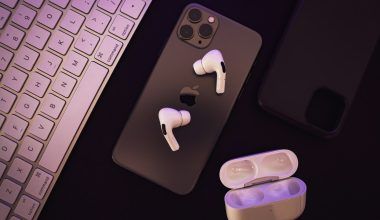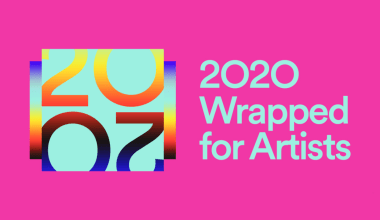If you’ve just started exploring music production, choosing the best digital audio workstation (DAW) can feel overwhelming. Don’t worry—you’re not alone! With so many options available, finding a beginner-friendly DAW that balances simplicity with functionality can seem like a daunting task. But don’t fret; we’re here to help you navigate through the noise.
In this blog, we’ll break down the best digital audio workstations for beginners, highlight their key features, and guide you on how to pick the right one for your needs. By the end, you’ll feel confident to dive into the exciting world of music production. Ready? Let’s go!
What is a Digital Audio Workstation (DAW)?
Before diving into the best options, let’s clarify what a DAW is. A digital audio workstation is software that allows you to record, edit, and produce audio. Think of it as the heart of your home studio. From creating beats to mixing tracks, a DAW is essential for modern music production.
If you’re new to the music world, it’s crucial to pick a DAW that simplifies the production process without compromising quality. Thankfully, several beginner-friendly DAWs can help you learn the basics while still offering room for growth.
Why Choosing the Right DAW Matters for Beginners
Choosing the best digital audio workstation for beginners isn’t just about ease of use. The right DAW can:
- Make learning enjoyable.
- Boost your creativity.
- Provide essential tools to bring your ideas to life.
When you’re just starting, the last thing you want is to feel stuck or frustrated with overly complex software. That’s why we’ve focused on DAWs that are intuitive, affordable, and beginner-friendly.
Features to Look for in a Beginner DAW
As a beginner, here are some key features to look for in a DAW:
- User-Friendly Interface: A clean and intuitive layout makes it easier to navigate and learn.
- Built-in Tutorials: Many beginner DAWs come with guided tutorials to help you get started.
- Affordable or Free Options: Look for DAWs with trial versions or affordable pricing plans.
- Compatibility: Ensure the DAW works smoothly with your computer and other gear.
- Essential Tools: Basic features like recording, editing, and mixing are non-negotiable.
Now that you know what to look for, let’s explore some of the best options!
The Top 7 Digital Audio Workstations for Beginners
1. GarageBand (Mac Only)
GarageBand is often the first DAW for many beginners. It’s free, intuitive, and comes pre-installed on Mac devices. With its drag-and-drop interface and a wide variety of loops, instruments, and effects, it’s perfect for exploring music production without feeling overwhelmed.
Why Beginners Love It:
- Easy-to-navigate interface.
- High-quality virtual instruments.
- Free for Mac users.
Limitations:
- Mac-exclusive.
- Limited advanced features for professional projects.
2. FL Studio
FL Studio is widely popular among beginners and professionals alike. Known for its colorful interface and lifetime free updates, FL Studio is a great choice if you’re keen on creating beats and electronic music.
Why Beginners Love It:
- Intuitive drag-and-drop functionality.
- A strong focus on beat-making.
- Extensive library of plugins and effects.
Limitations:
- The free trial has some restrictions.
- Can feel overwhelming at first due to its features.
3. Ableton Live
Ableton Live stands out for its unique workflow, especially if you’re interested in live performances or electronic music. Its Session View allows you to experiment with loops and ideas seamlessly.
Why Beginners Love It:
- Unique session and arrangement views.
- Built-in tutorials.
- Versatile for both studio and live performances.
Limitations:
- Slightly steeper learning curve.
- Higher price point.
4. Reaper
Reaper is a budget-friendly DAW with professional-level features. While it’s not as flashy as some others, it’s highly customizable and lightweight, making it an excellent choice for beginners.
Why Beginners Love It:
- Affordable pricing.
- Lightweight and efficient.
- Excellent community support.
Limitations:
- Basic interface may seem dated.
- No built-in instruments.
5. Logic Pro X (Mac Only)
If you’re ready to invest in a premium DAW, Logic Pro X is a fantastic option. It’s like GarageBand on steroids, offering advanced features while maintaining ease of use.
Why Beginners Love It:
- Seamless transition from GarageBand.
- Massive library of sounds and effects.
- Great for all genres.
Limitations:
- Mac-exclusive.
- Higher price point.
6. Studio One by PreSonus
Studio One is a versatile DAW that caters to both beginners and professionals. Its drag-and-drop functionality and clean interface make it beginner-friendly.
Why Beginners Love It:
- Intuitive workflow.
- Free “Prime” version available.
- Built-in mastering tools.
Limitations:
- Limited features in the free version.
- Some plugins require additional purchases.
7. Cakewalk by BandLab
Cakewalk is a hidden gem, offering a professional-grade DAW for free. It’s feature-rich yet accessible, making it ideal for beginners on a budget.
Why Beginners Love It:
- Completely free.
- Powerful editing and mixing tools.
- Regular updates and support.
Limitations:
- Windows-only.
- Slightly outdated interface.
How to Choose the Best DAW for Your Needs
Now that you know some great options, here’s how to decide:
- Consider Your Budget: Free or affordable DAWs like GarageBand and Cakewalk are great starting points.
- Think About Your Goals: Are you producing beats, recording vocals, or experimenting with live performances? Match your DAW to your needs.
- Try Before You Buy: Most DAWs offer free trials. Use these to explore and see what feels right.
- Look at Tutorials: Check online resources to see which DAW has the best beginner guides and tutorials.
Final Thoughts: The Best Digital Audio Workstation for Beginners
Choosing the best digital audio workstation for beginners is about finding what works best for you. Each DAW has its strengths, so don’t be afraid to experiment. Remember, the most important thing is to start creating and having fun.
Whether you go for the simplicity of GarageBand, the versatility of FL Studio, or the power of Ableton Live, the right DAW is out there waiting for you. So, dive in, start experimenting, and let your creativity shine.
For further reading, explore these related articles:
- Why Listing the Featured Singer on Album Covers Matters
- How to Upload Songs on Spotify: A Step-by-Step Guide
For additional resources on music marketing and distribution, visit DMT Records Private Limited.






